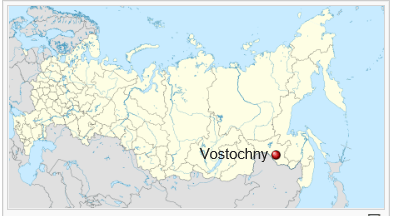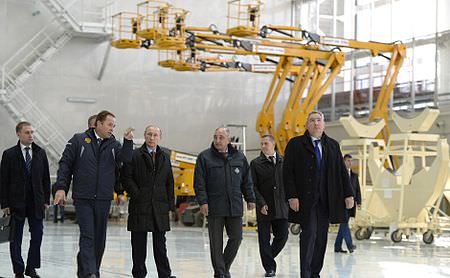Russia’s new Vostochny Cosmodrome launched its first rocket on Wednesday, April 27th, carrying three new satellites into orbit. After an initial 24-hour launch delay due to a computer-initiated abort, a Soyuz-2.1a lifted off from its pad at 10:01 am EDT. Every successful space launch is important in its own way, but this one even more so because of the importance of this new cosmodrome to Russia.
The breakup of the Soviet Union in 1991 threw that country into chaos. The formal dissolution of the USSR on December 26th, 1991, created a lot of financial and political turmoil. The Soviet space program was a victim of that chaos, and with the USSR’s main cosmodrome now located on foreign territory, at Baikonur, Kazakhstan, things were uncertain.
Roscosmos, the Russian space agency, has been renting the Baikonur cosmodrome for $115 million annually. But this dependence on a foreign launch site has been a thorn in the side of Russia for decades. Russia is a fiercely independent and proud nation, so it surprised no one when construction of a new spaceport was announced. In 2010, Vladimir Putin emphasized the importance of the new facility, saying “The creation of a new space center … is one of modern Russia’s biggest and most ambitious projects.”
The new facility, called the Vostochny Cosmodrome, will eventually be home to multiple launch pads, though only one is functional for now. It’s located at 51 degrees north, whereas the Baikonur site is located at 46 degrees North. Though further north, it will still be able to launch almost the same payloads as Baikonur.
Russia has other spaceports on its own territory. The Svobodny Cosmodrome is also located in Russia’s far east, and at the same 51 degrees north as Vostochny. But Svobodny was originally an ICBM launch site, and couldn’t handle the launching of crewed missions. All crewed missions had to be launched from Baikonur. Russia has another cosmodrome, the Plesetsk Cosmodrome, where satellites can be launched into geostationary orbit.
The site for the new Vostochny Cosmodrome (Vostochny means ‘eastern’ in Russian) was chosen for a few reasons. The site is serviced by both highway and rail, and is remote enough that launch paths won’t interfere with any built up areas. It’s also located several hundred kilometres from the Pacific Ocean, to avoid complications that proximity to an ocean can cause, yet close enough that spent stages can be jettisoned and will fall harmlessly into the ocean.

Vostochny is about the same size as the Kennedy Space Centre in Cape Canaveral. Vostochny covers 551.5 square kilometers, while the Kennedy facility covers 583 square kilometers. The new cosmodrome will eventually house over 400 separate facilities, including engineering and transport infrastructure.
The Vostochny Cosmodrome project has suffered some setbacks. Parts of the assembly complex for the Soyuz 2 rocket were built too small, which delayed the planned initial launch set for December 2015. There’ve been accusations of corruption, and even a worker’s strike in the Spring of 2015 over unpaid wages.
These and other problems led Valdimir Putin to release a statement saying he was taking personal control of the project. Since then, Putin has kept a close eye on the Vostochny project. In response to the recent 24 hour launch delay of the cosmodrome’s inaugural launch, Putin criticized Roscosmos for the delay, and for all of the glitches and failures in the Russian space program recently.
But, ever the politician, Putin also tempered his remarks, saying “Despite all its failings, Russia remains the world leader in the number of space launches.” “But the fact that we’re encountering a large number of failures is bad. There must be a timely and professional reaction,” he added.

As for Vostochny itself, it will allow Russia to conduct much more of its space launches on its own soil. By 2020, Vostochny will conduct 45% of Russia’s space launches. Baikonur will still be used, but much more sparingly. It currently is responsible for 65% of Russian launches, but that will drop to 11%. The Plesetsk Cosmodrome will account for the other 44%.
As for the inaugural launch, it went flawlessly after its initial 24 hour technical delay. The three satellites it carried into orbit will fulfill several different functions. Together, they will study the Earth’s upper atmosphere, observe gamma-ray bursts, and test new electronics modules for use in space. They will also carry high-resolution cameras for remote sensing and scientific work, test communication systems with ground stations, and will develop control algorithms for use with nano-satellites.

